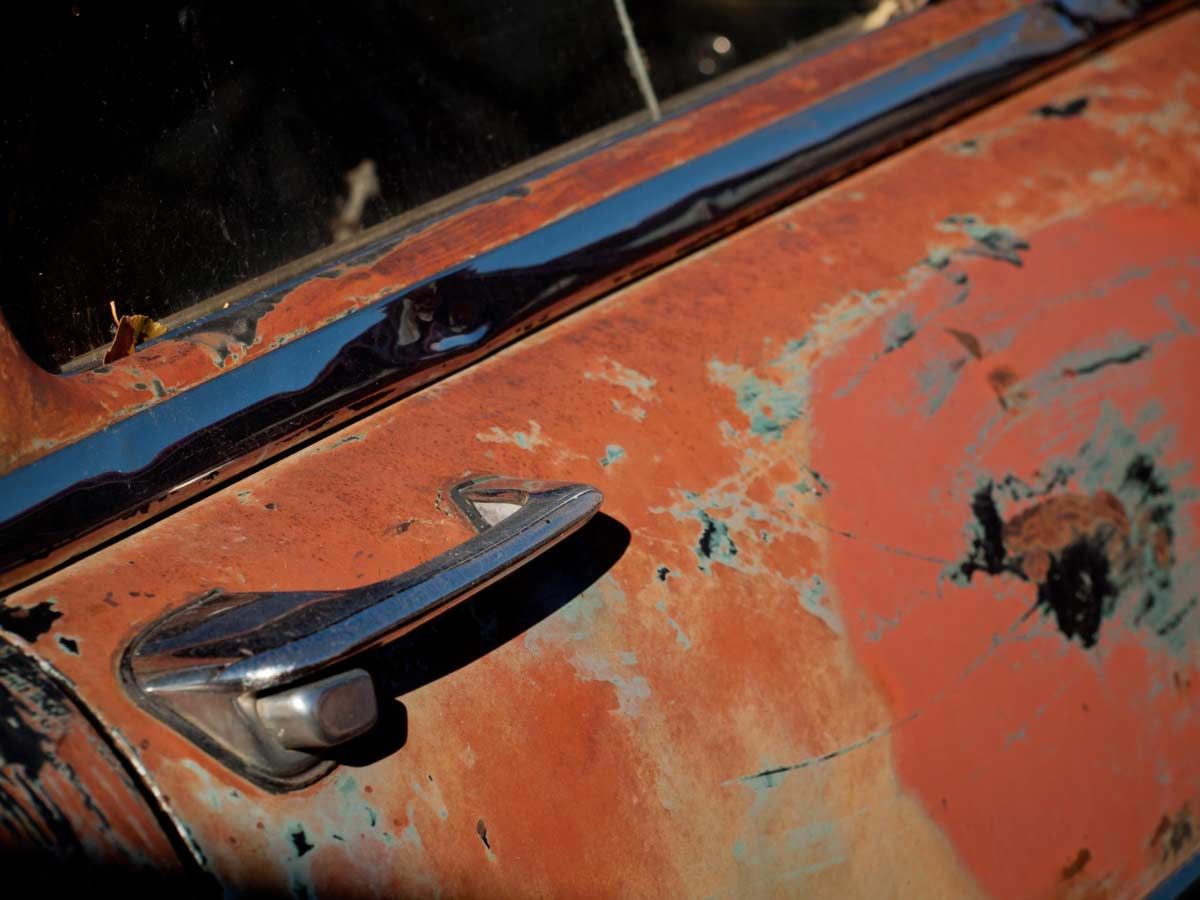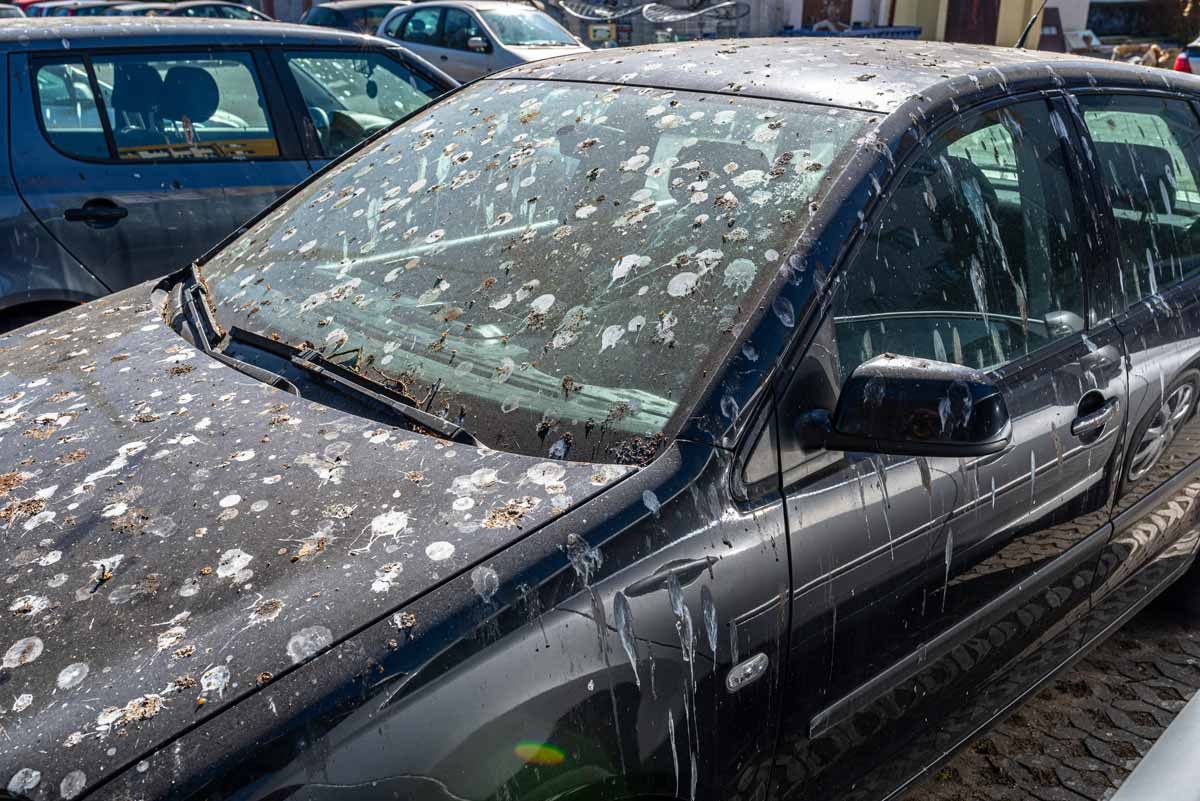Top 5 Types of Car Paint Damage (and How to Prevent Them)
By John Funk, February 14, 2023

It is an unpleasant sight for car owners to watch their vehicles’ paint messed up. No matter how careful they may be, car paint damage is inevitable as vehicles often remain exposed to the elements.
As a car owner, you should be aware of the various types of car paint damage. While minor paint damage can be easily repaired, if left unattended for an extended period of time, it can lead to more expensive body repairs.
There are various types of car paint damage; however, once you know what to look out for to prevent paint damage in the first place, it can be easier to avoid them.
Types of Car Paint Damage and How to Prevent Them
There are several elements that can cause damage to the paint of a vehicle. Even seemingly harmless substances can cause some serious damage to your paint. Here are some common car paint damage types.
#1. UV Rays (the Sun)
- When your car is left uncovered for a long time on a bright sunny day, the harmful UV rays from the sun can cause some serious damage to your car’s paint. Frequent exposure to the sun’s rays is what causes car paint to fade.
- UV rays can damage the internal components of your vehicle and also oxidize and fade the car’s paint. Sun-damaged car paint can make your car look old and worn out before its time, thereby affecting its resale value.
- Overexposure of your vehicle to UV rays can result in the breakage of molecular bonds, causing them to become less reflective, transmitting less light outward, causing the paint to fade, and resulting in a dull color.
- UV rays can also cause degradation due to rapid temperature changes, causing the shape of the paint coating to change, leading to cracks and fading.
- One of the best ways to avoid this type of paint damage is to park your vehicle in a garage or any other indoor parking space. If you are not fortunate enough to own a garage, you should use high-quality car covers to protect your car from harmful UV rays.
#2. Water Spots
- When rain, dew, and sprinklers strike your vehicle on a regular basis, you may disregard the moisture and allow it to evaporate away. This results in the formation of water spots that may not be easy to wipe away as they tend to forge a strong presence on your car’s paint job.
- As a car owner, you should not underestimate the power of water spots and their negative effect on your vehicle’s paint.
- Spots may also appear when hard water is used to wash your vehicle or when you don’t clean up a spray of unclean water. Metals and calcium are found within hard water that can be harmful to your paint because of their molecular structure. When you try to rub them away, it will only create more damage to the underlying layers.
- Too many water spots can affect the appearance of your vehicle. When you try to wipe them away, you may end up scratching the paint even further with a rubbing motion.
- The damage caused by the minerals (metal and calcium) can be minimized by using distilled white vinegar. After washing your vehicle, apply this vinegar and rinse it off after about one minute. The minerals get dissolved, giving your vehicle a showroom-fresh look. Make sure to use a wax or sealant later to protect the finish further.
#3. Tree Sap
- Tree sap, pollen, branches, and nuts can wreak havoc on your car’s paint. Usually, tree sap eats away at paint, leaving the metal underneath completely exposed.
- Tree sap doesn’t damage your paint immediately. The damage usually happens over a period of time and not right away.
- When the sap is fresh, it will not be difficult to wipe it away. However, it can be difficult when it is allowed to harden on your car’s paint.
- When the sap is not wiped away for a long time, it starts to harden and adheres to your paint. So, when you remove it, you may take away a layer of your paint as well. Therefore, it is crucial to remove sap before it hardens.
- You should use wax on your vehicle regularly, as it acts as an effective barrier between your paint and abrasive substances. You also need to make sure that you don’t park your car under a tree, especially during the fall and on sunny days when it is most likely for tree sap to fall onto your vehicle.
#4. Bird Droppings

- Bird droppings can cause significant damage to your vehicle as they contain acidic components and are corrosive.
- Bird excretions are acidic and have a high pH level (3.5 to 4.5 on average) that can cause them to burn through the clear coat and eat away at your paint.
- If you do not wipe away the excretion, it can splatter over a wide area, especially when you are driving your vehicle at a high speed. Therefore, you should wash it out immediately before it damages your paint. Try to avoid parking your car in open spaces, especially under trees.
- A mixture of bicarbonate soda and hot water can be very effective to get rid of the droppings. You need to pour one liter of hot water into a bottle and add four tablespoons of bicarbonate soda into it. Spray this solution onto the affected area and let it soak for about 10 minutes. After that, spray it down with fresh water. Avoid wiping it off first as it can scratch your car’s paint due to its abrasive nature.
#5. Brake Fluid
- There are certain fluids that can damage your car’s paint, especially brake fluids that can peel your vehicle’s paint if left for a long time.
- When you accidentally spill brake fluid on your car’s paint, you should respond promptly by cleaning it immediately, otherwise, it may erode the coating layer of your paint job and expose the metal underneath.
- One main reason why brake fluid ruins paint is that most brake fluids used today are glycol-ether based that can create a chemical reaction when the molecules within the brake fluid mix with your car’s paint, causing the brake fluid to become an aggressive solvent.
- To prevent this damage, you should always keep fluids at a safe distance from your vehicle as the combination of brake fluid and paint job just doesn’t end well and are not meant to exist together.
These are some common car paint damage types that car owners need to be aware of.
Why You Should Choose Seal Skin’s Top-Quality Car Covers

There are several ways to prevent your car’s paint from getting damaged; however, the benefits of using a top-quality car cover are unparalleled. At Seal Skin, we offer a wide variety of car covers that use a more durable material like polyester that’s treated to effectively block moisture and UV rays. Our car covers also include a soft fleece interior lining to prevent scratching the paint.
You can call us at 800-915-0038 during our office hours (Monday to Sunday, 9 AM to Midnight EST) and we will help you find the right car cover that fits your needs and budget. We will also help you if you have any questions about our products, shipping policies, and exchange/refund policies.

